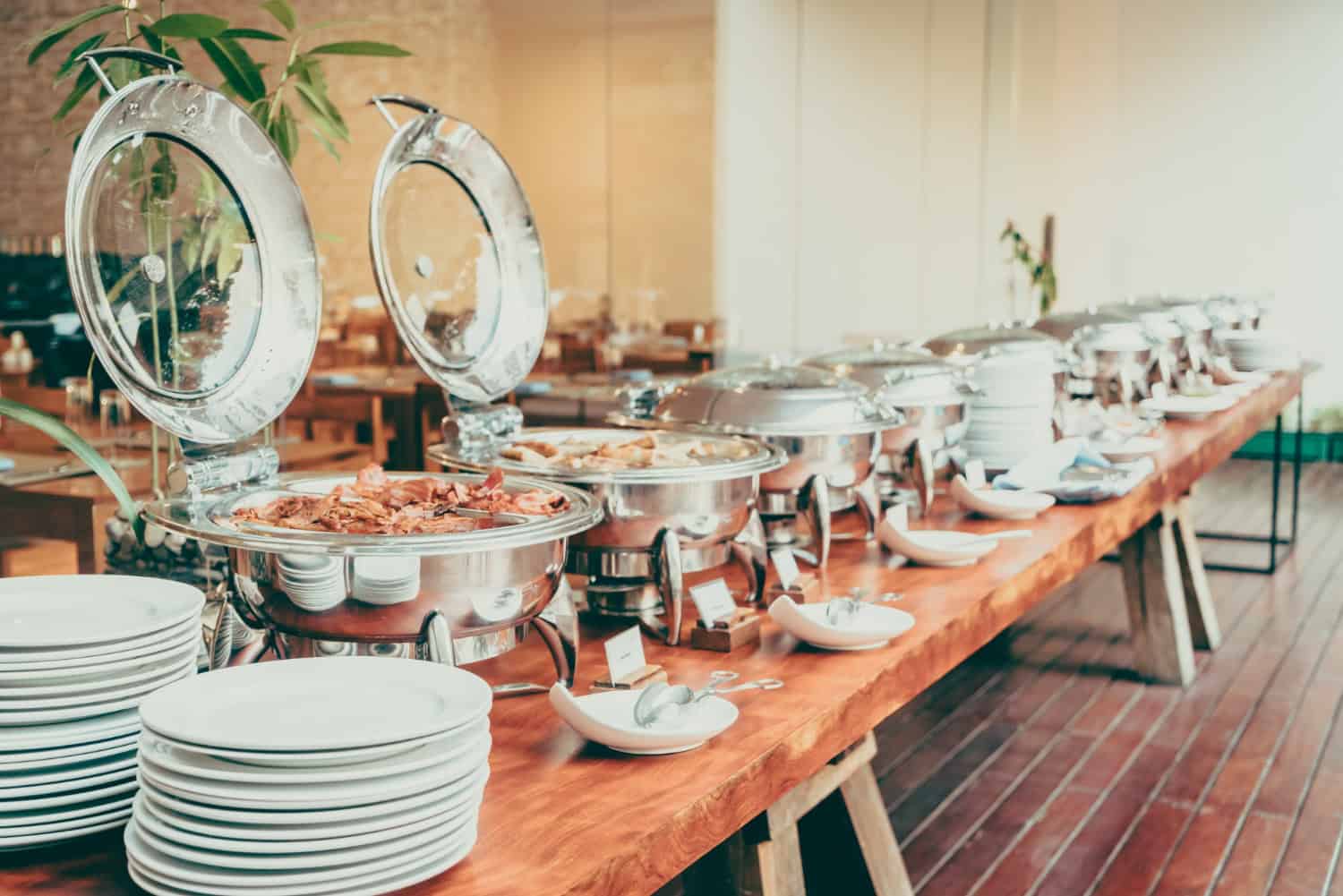
By Jermaine Thomas March 25, 2025
Proper planning can make catering a smooth operation. However, in reality, even the most well-laid plans can backfire. Events are postponed. Lists of guests increase overnight. One of the vendors abruptly cancels. Professional caterers excel in this situation, not only in their faultless execution but also in their ability to handle the last-minute commotion of event preparation.
What Is Last-Minute Catering?
Last-minute catering refers to situations where a caterer has to organize, prepare, and deliver food and service within a tight timeline — sometimes just hours before the event. This often happens due to unexpected changes or oversights in the planning process. Professional caterers must act fast and efficiently to ensure the event still runs smoothly, offering clients peace of mind in moments of panic.
Whether it’s a wedding, corporate event, or private party, last-minute catering can save the day. It’s a specialized skill that blends speed, experience, and catering adaptability to meet urgent needs.
Why Do Last-Minute Changes Happen?
There are a variety of reasons why event details may shift unexpectedly. Sometimes it’s due to weather. Other times, it’s because the client forgot to book a caterer altogether. Here are a few common scenarios:
- A sudden increase in guest count
- A cancellation from the original caterer
- A venue change
- Unforeseen dietary restrictions
- Equipment failure or supply chain delays
In all of these cases, emergency catering solutions come into play. These unexpected shifts put caterers to the test, challenging them with food service challenges that require immediate solutions.

The Key Role of Catering Adaptability
Perhaps the most crucial quality for last-minute event planning is adaptability. Effective caterers must adapt quickly to changing needs in venue requirements, staffing, equipment, transportation, and food preparation. Adaptability in catering involves:
- Having backup ingredients and supplies ready
- Being flexible with menus
- Quickly sourcing from alternative vendors
- Scaling portions up or down depending on guest count
- Coordinating with other service providers like florists and decorators
When unexpected changes hit, catering adaptability becomes a superpower. It’s what separates seasoned professionals from the rest of the field.
Emergency Catering: More Than Just Food
When people think of emergency catering, they often picture a team scrambling in the kitchen. But it’s so much more than that. These professionals are skilled event managers, logistics coordinators, and problem-solvers. They have a plan B — and often a plan C — for every part of the service.
A network of backup chefs, delivery drivers, rental services, and suppliers is typically possessed by emergency catering teams. Additionally, they receive training on how to maintain composure under pressure and put the needs of the client first. From execution to communication, they handle every food service difficulty with grace.
How Caterers Handle Event Changes in Real Time
Handling event changes effectively requires a calm mindset, sharp communication, and structured processes. Here’s a look at how top catering teams manage real-time adjustments:
Immediate Assessment and Planning
As soon as a change is reported, the catering manager will evaluate the scope of the adjustment — whether it’s minor or requires a full overhaul. A new headcount, venue change, or timing shift can each trigger different actions.
Menu Adjustments
If the original menu isn’t feasible anymore, caterers will adapt. For example, if there’s no time to prepare a complex entrée, they might pivot to something quicker but equally delicious. Menu flexibility is a cornerstone of catering adaptability.
Re-Assigning Staff Roles
The new plan is used to restructure staffing. Chefs might be asked to work double shifts, or more servers might be called in. Everyone will understand their new responsibilities if there is clear communication.
Re-Scheduling Deliveries
If ingredient deliveries or rentals were already scheduled, they’ll need to be adjusted. That might mean pulling from local vendors or using alternate logistics partners who specialize in last-minute event planning.
Informing the Client
Clients are informed but not overburdened. Professional caterers let clients know that everything is under control even during emergency catering efforts by striking a balance between openness and assurance.
The Importance of a Reliable Network
One of the biggest assets in emergency catering is having a solid network of trusted partners. When time is limited and stakes are high, professionals call on:
- Local farms and grocery suppliers
- Temporary staffing agencies
- Rental companies for tables, tents, and kitchen equipment
- Transportation services
This network allows caterers to respond to unexpected needs efficiently. In fact, many caterers build these relationships with emergency situations in mind. Being able to adapt quickly is only possible if you have the right people on speed dial.
Managing Food Service Challenges Without Compromising Quality
Maintaining quality is non-negotiable, even when plans change last minute. This is one of the greatest food service challenges caterers face. Here’s how they make it happen:
- Prepping versatile ingredients: Items like pasta, rice, and roasted vegetables can be used across multiple menu options.
- Using smart cooking methods: Batch cooking or pre-cooked elements save time without sacrificing flavor.
- Investing in portable cooking gear: Mobile ovens, induction burners, and insulated carriers keep food hot and safe during transport.
- Sticking to core flavors: Tried-and-tested recipes that are fast to assemble often make a return in last-minute menus.
Clients often worry that emergency catering means settling for less. But professionals are trained to ensure that’s never the case. They plan smartly to keep the food fresh, safe, and tasty.
Technology as a Game-Changer
Adapting to abrupt changes has become simpler thanks to technology. Caterers now have tools that help them adapt more quickly, such as real-time inventory management and online ordering systems.
While some software programs automate the timetables for kitchen preparation, others assist in managing guest lists and dietary restrictions. Managers can track food deliveries using GPS and reroute them as necessary. These technological tools facilitate last-minute event planning and lessen client and caterer stress.
A Corporate Lunch with a Twist
Imagine a company lunch for 100 people. At 9:00 AM, the client realizes they never confirmed the caterer. Panic sets in. They call a local caterer known for their emergency catering services.
By 10:30 AM, the caterer confirms the order and begins sourcing ingredients. At 11:00 AM, two sous-chefs arrive with prep kits. By noon, hot meals are delivered — grilled chicken bowls, vegetarian wraps, and fresh salads, complete with drinks and desserts. The client is blown away. No one at the event even knows it was pulled off last minute.
This real-world example shows how catering adaptability and smart systems make it possible to save the day — even on short notice.
Communication: The Glue That Holds It All Together
Effective communication is essential for managing event changes. It keeps the client updated and guarantees that each team member is aware of their responsibilities. To keep organized, caterers utilize checklists, team management apps, and group chats. In order to control expectations, they also keep in close contact with the client. This reduces misunderstandings, hold-ups, and errors.
Clients appreciate being kept in the loop, especially during last-minute event planning. A simple message confirming new details can go a long way in building trust.
What Clients Can Do to Help
While professional caterers are equipped to handle emergencies, clients can make things smoother by:
- Being honest about timelines and challenges
- Providing key details like guest count, dietary needs, and venue limitations
- Trusting the caterer’s recommendations
- Staying available for quick decision-making
A cooperative client-caterer relationship is crucial during emergency catering situations. It ensures everyone works toward the same goal: a successful event, no matter the hurdles.

Proactive Practices That Prevent Panic
While it’s impossible to prevent all issues, many food service challenges can be minimized through smart practices:
- Backup menus: Having a pre-approved alternate menu cuts decision time.
- Inventory buffers: Keeping extra supplies in-house reduces dependence on urgent deliveries.
- On-call staff: Maintaining a list of standby workers helps scale operations quickly.
- Mock drills: Practicing response to sudden changes builds team confidence.
Many top caterers train their staff for these situations. This preparation ensures they’re always ready, whether they have two weeks or two hours to prepare.
Lessons from the Field
Veteran caterers often have war stories about last-minute event planning. From surprise weddings to sudden corporate galas, they’ve seen it all. Their biggest lessons?
- Never underestimate the value of a calm, organized team.
- Build menus that are flexible and delicious.
- Keep relationships strong with suppliers and staff.
- Communicate early and often.
- Always expect the unexpected.
These lessons become part of every caterer’s DNA — making them more resilient in the face of food service challenges.
The Art of Staying Cool Under Pressure
Catering is often seen as glamorous — elegant displays, gourmet meals, seamless service. But behind the scenes, it’s a high-pressure world, especially during emergencies. What sets the best caterers apart is their ability to manage chaos with professionalism and poise.
Last-minute catering is a real test of talent and dedication, whether it involves changing menus, handling logistics, or responding to last-minute event changes. Even the most unanticipated changes can be handled with the correct group, resources, and attitude. So don’t worry the next time an event takes an unexpected turn; there are caterers who thrive on situations like these. For them, overcoming obstacles in the food service industry is more than just their job. They flourish there.